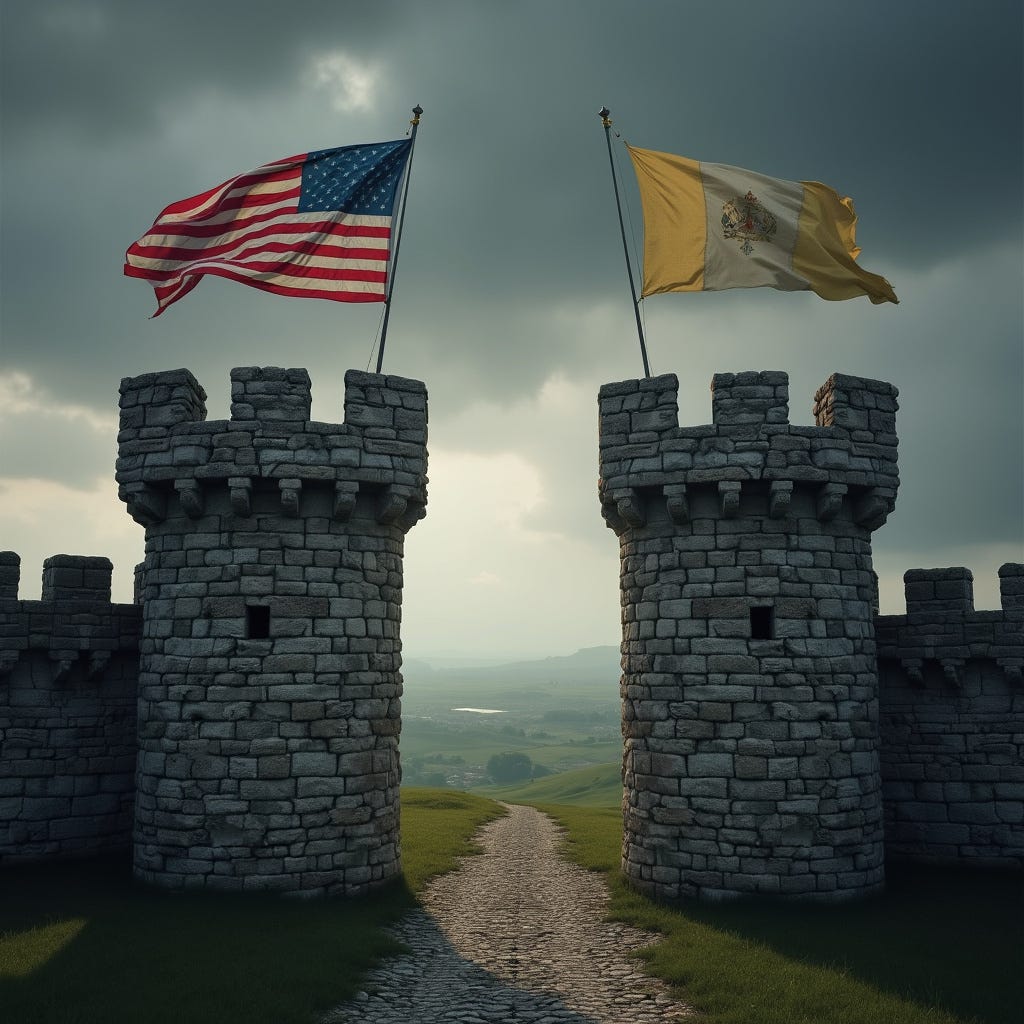Vatican walls
The Holy See also has its immigration and citizenship laws. And they are not easy to comply with
Special note. At Borgo Pio we follow with attention the evolution of Pope Francis' health. Following our policy we do not speculate, we do not predict and we do not foresee anything. This is the most useful for our readers.
You can listen here our weekly podcast
The Trump Administration and the Holy See have not taken long to clash in public regarding illegal immigration. To the letter addressed by Francis to the American Bishops' Conference expressing his concern about the massive deportations of illegal immigrants prepared by President Trump, the White House has replied by recalling that the Vatican “also has a wall.” The truth is that the American argument is a bit poor, but it is also true.
The inhabitants of Borgo Pio will not dare to interfere in a discussion between two institutions as important as the Holy See and the White House. Of course, when in doubt, we are papists, for we are born, live and die always looking at the dome of St. Peter's (although we also know from experience that Popes come and go). In any case, this nice discussion between the heir of Peter and the heir of George Washington serves as an excuse to explain to our readers something quite unknown: the Vatican's immigration laws, which also (oh dear) have just been tightened by Francis,
Much more than a line on the map
Borgo Pio (the street in the Rione Borgo neighborhood) ends at the Vatican walls. Yes, those same ones that Trump talks about. In front of the Borgo Pio opens the Porta di Santa Anna, one of the few accesses to the Vatican City. The gate, which is actually a metal gate, is next to the Church of Santa Anna, which is the official parish church of the Vatican, and next to the headquarters of the Swiss Guard. During the day there is a noticeable flow of authorized persons entering for all kinds of errands (including shopping at the supermarket and stores) and a more than noticeable attempt by tourists to enter where they shouldn't. They don't know it, but they are trying to cross one of the strictest borders in the world.
There are other gates, but the rest of the 3.2 kilometer perimeter of Vatican City is surrounded by a wall (point to Trump) called the Leonine Walls, dating back to the 9th century. And they are not small because they have an average height of about 14 meters. A real fortification.
Who guards the border
Protecting the City are two military/police forces. The Swiss Guard (the guys with the colorful uniforms that, whatever they say, were not designed by Michelangelo) which is made up of about 100 men and the Gendarmerie, of which between 130 and 150 people are part. And nothing else. No secret agents shooting holy water with their guns, no Da Vinci code, no stories that we have seen dozens of times in the restaurants of Borgo Pio created by experts without sources.
The curious thing is that given that the number of Vatican citizens is around 700, the fact that there are about 250 military/police to protect them technically makes Vatican City one of the most militarized states in the world.
Since the Vatican borders Italy on all sides, it is in practice within the Schengen area for visitors, i.e. no special visa or passport is required to enter Vatican City territory, as anyone who has visited St. Peter's can attest.
A difficult citizenship to obtain
Of course, being a Vatican citizen is a very difficult status to achieve, very controlled and even more difficult to maintain. And, in fact, in recent years the conditions for attaining and maintaining Vatican citizenship have become more and more complicated. For example: citizenship does not guarantee a residence permit (it must be a unique case in the world), citizenship can be lost due to circumstances such as divorce. In addition, children of Vatican citizens automatically lose citizenship when they turn 18. Perhaps the youngest Vatican citizen who has sadly gone down in history is Emanuela Orlandi, who disappeared in Rome in 1983 when she was 15 years old. To this day her whereabouts remain a mystery.
A significant number of Vatican citizens are outside the territory of the City-State. They are usually diplomats serving abroad or on special mission who are provided with passports.
Who then lives in the Vatican? If we mean by living, domiciled and sleeping there, not many people. Don't ask us for numbers. In the Vatican it is almost a miracle to get a concrete number when talking about people. Most of the 5,000 or so people who work for the Holy See live (sleep) outside the walls. Technically we could consider them foreign workers (point for Francis in his discussion with Trump).
Sharpening the law.
Last month, however, Francis issued a decree raising fines and even establishing prison sentences for those who violate security regulations regarding illegal entry into the City-State.
In particular, those who violate the procedures risk penalties ranging from 10,000 to 26,000 euros and 1 to 4 years of imprisonment. Naturally the use of violence or carrying weapons place the punishments in the highest range, but it must be emphasized that for example, loitering after making a transaction inside the City-State or going to another place/department than the one you have permission to access, can also be subject to a stiff penalty of up to 5,000 euros.
Finally, anyone caught trying to enter the Vatican illegally can be denied entry (including St. Peter's Basilica) for 15 years, and if they attempt to enter during that period they can be sent directly to prison.
Tough times to be an immigrant. Also in the Vatican




